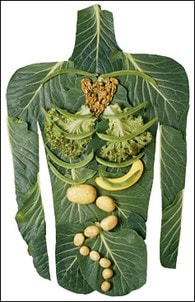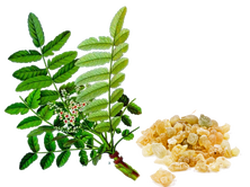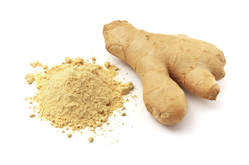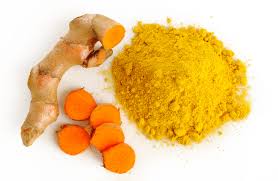Not to worry!
In today's post, we have a breakdown of two major types of inflammation, including symptoms, triggers, and treatments! Read on and get your inflammation game sorted.
Far from being a sign of ill-health, normal, occasional inflammation is the natural response of a well-functioning immune system. It works to remove harmful stimuli that irritate or affect parts of the body, by flushing the area with blood cells and oxygen, triggering healing and repair. The signs and symptoms of inflammation show that the body is simply trying to heal itself. But when inflammation is persistent or occurs in response to harmless stimuli, it can become irritating, painful, and even dangerous.
There are two major types of inflammation – Acute and Chronic.
Acute inflammation is when the inflammation starts rapidly and typically lasts for a few days or a few weeks. This could be something as small as a sore throat, an ingrown toenail, or tonsillitis, but can also be more severe, such as appendicitis, meningitis or bronchitis. Acute (meaning severe or sharp) does not necessarily mean less painful; the difference is that unlike chronic inflammation, acute inflammation will usually subside with correct treatment.
Chronic inflammation means long-term inflammation. This can last a few months or even a few years depending on the severity of the disease. Inflammation becomes chronic when it stops being an acute response and remains a constant low-level physiological response. Almost like starting a small campfire that slowly grows out of control.
Chronic inflammation is when your body no longer has the ability to turn off the inflammatory response and starts damaging healthy tissue in your body.
Triggers
There can be many triggers that can cause chronic inflammation such as excessive calorie consumption, elevated blood sugar levels and stress. It can damage your intestinal lining and cause digestive problems, and can also damage your arteries, causing heart disease, and your joints, causing rheumatoid arthritis.
Treatments
- Because some inflammation is due to injury or trauma, it can be tender to touch. This doesn't mean, however, that you should avoid your Myotherapist during the inflammation stage. Just the opposite in fact. Your Myotherapist can prescribe exercises that can help ease inflammation and help you regain strength in affected areas without even touching you. They are also well-versed in enabling other parts of the body to run more smoothly and more effectively, to help ease your inflammation so that you don't overcompensate.
- Inflammation in the body often results in heat coming from the affected area. Some rub on gels that are made for muscle aches and pains can also produce heat when applied. This can aggravate the inflammation and prolong healing. We suggest a cooling gel, made to provide a cool relief for heat related pains in the body, such as inflammation. Sombra pain relieving gel comes in a heat and cooling form. Both can be used as a topical solution for muscle aches and pains.
- Whole foods - foods that have no need for an ingredients list - heal the body. There are many foods that will help against inflammation; here is a list of the top 10 foods that studies have shown to help the body fight against inflammation.
 Proteolytic Enzymes
Proteolytic Enzymes Many health practitioners today are advising patients to take proteolytic enzymes to help with everything from inflammation and autoimmune conditions to heart disease and plaque. Some doctors even suggest that it can be used for treatment of cancer. Enzymes are proteins that facilitate chemical reactions in living organisms. In fact, they are required for every single chemical action that takes place in your body. All of the body’s tissues, muscles, bones, organs and cells are run by enzymes. Proteolytic enzymes reduce inflammation by neutralizing the biochemicals of inflammation. They are usually taken orally in a pill form, however since stomach acid can destroy proteolytic enzymes, the best formulas are “enteric coated” – meaning that the pills have a coating around them to prevent the pill from being broken down in the stomach. An enteric-coated pill passes into the small intestine, where due to the pH change it will break down there.
| Turmeric Turmeric is the spice that gives curry its yellow colour. It has been used in India for thousands of years as a spice and medicinal herb. Curcumin is the main ingredient in turmeric, which has powerful anti-inflammatory effects on the body and is a very strong antioxidant. It turns out that curcumin is strongly anti-inflammatory; it is so powerful that it matches the effectiveness of some anti-inflammatory drugs. |
 Boswellia
Boswellia Boswellia are moderate-sized flowering plants, including both trees and shrubs, which has multiple health benefits. Also known as frankincense, it has been burned in religious and cultural ceremonies for centuries. In todays alternative health world boswellia is widely regarded as a potent anti-inflammatory nutrient. The Boswellic acids in boswellia seem to have the ability to suppress the inflamed areas of the body and prevent the breakdown of connective tissue. It has also been found to improve blood supply to the joints and restore the integrity of weakened blood vessels with no side effects as seen with other traditional drugs of choice.
 Ginger
Ginger Ginger is believed to have anti-inflammatory qualities that may relieve swelling and pain. Ginger is among the healthiest (and most delicious) spices on the planet. It is loaded with nutrients and bioactive compounds that have powerful benefits for your body and brain. Ginger contains very potent anti-inflammatory compounds called gingerols. These substances are believed to explain why so many people with osteoarthritis or rheumatoid arthritis experience reductions in their pain levels and improvements in their mobility when they consume ginger regularly. Whenever possible, choose fresh ginger over the dried form of the spice since it is not only superior in flavour but contains higher levels of gingerol (it's anti-inflammatory compound)
 Healthy nuts
Healthy nuts Nuts are known for their anti-inflammatory nature, but some are better for you in this regard than others. Almonds, in particular help with inflammation. Cashews are another good choice, and walnuts specifically help with rheumatoid arthritis. The great thing about most of these nuts is that they’re very versatile, making a great between meals snack or adding flavour to any main dish or side dish. It’s typically quite easy to start eating more of them by simply being more aware that they can help you with your inflammatory conditions.
 Green Tea
Green Tea Green Tea is said to be the healthiest beverage on the planet. It is loaded with antioxidants and nutrients that have a powerful effect on the body. Some of the many benefits include Improving brain function, helps with weight loss as it increases fat burning, it can lower your risk to various types of cancer and it has anti-inflammatory effects as well, which can help those who suffer from rheumatoid arthritis. A 2012 cancer prevention research conference presented evidence that men with prostate cancer who consumed green tea before undergoing prostate removal surgery had reduced inflammation markers, the National Cancer Institute notes.
 Broccoli
Broccoli Broccoli is another super food that is packed with anti-inflammatories, fiber and antioxidants. Broccoli contains a compound called sulforaphane which research has suggested as having anti-inflammatory properties. Broccoli is a great anti-inflammatory and may slow down the damage to joints associated with osteoarthritis. Broccoli's isothiocyanates and omega-3 fatty acids also help to regulate inflammation especially in the intestinal tract, which can reduce chronic inflammation. Broccoli is best consumed steamed for up to 20 minutes, microwaving for up to three minutes and stir-frying for up to five minutes. Raw broccoli maintains all of its nutrients, but it is also more likely to irritate your bowels and cause gas. In general, broccoli is safe to eat, and any side effects are not serious. The most common side effect is gas or bowel irritation, caused by broccoli's high amounts of fiber in the vegetable.
 Blueberries
Blueberries Blueberries are an antioxidant powerhouse. They are sweet, nutritious and incredibly good for you. Blueberries are very low in calories. 100 g fresh berries carry just 57 calories. Blueberries not only reduce inflammation, but they can protect the brain from aging and prevent diseases, such as cancer and dementia. Always aim for organic berries, as pesticides are hard to wash away due to their size.
 Tart Cherries
Tart Cherries Tart cherries are loaded with important nutrients, but you'd have to eat an entire bag of them to obtain all of the benefits you can get by sipping the juice. The fruit also contains many antioxidants and anti-inflammatory agents, and its juice aids in cancer prevention and heart health and as an anti-inflammatory, which can help alleviate a variety of ailments like asthma symptoms and pain. Tart cherries, a natural food high in antioxidants, may reduce some of the chronic inflammation associated with osteoarthritis, and help you to keep moving.
 Jars of Fermented foods
Jars of Fermented foods Fermented foods are foods that have been through a process of lactofermentation in which natural bacteria feed on the sugar and starch in the food creating lactic acid. This process preserves the food, and creates beneficial enzymes, b-vitamins, Omega-3 fatty acids, and various strains of probiotics. When you consume junk foods certain bacteria flourish and produce endotoxins, which your immune system detects and, interpreting these endotoxins as an attack, responds with inflammation. The best way to reverse this inflammation and restore a healthy metabolism is by eliminating excess sugar and processed food, and adding more friendly, beneficial bacteria from naturally fermented foods – Things such as natural yoghurt, Cottage Cheese, whey, pickled cucumbers, pickled garlic and many other fermented foods.
So there it is, our brief breakdown of chronic inflammation! If you have any more questions, or would like to begin the journey of healing your own chronic inflammation today, book online to see our wonderful Myotherapists!
References
http://www.medicalnewstoday.com/articles/248423.php
http://www.lifeextension.com
http://scdlifestyle.com
http://www.nutritionalwellness.com/archives/2006/jul/07_proteolytic.php
http://authoritynutrition.com/top-10-evidence-based-health-benefits-of-turmeric/
http://www.wellnessresources.com/health/articles/boswellia_an_anti-inflammatory_with_multiple_talents/
http://jonbarron.org/herbal-library/nutraceuticals/boswellia-serrata#.VrQJ1lI1jUU
http://www.whfoods.com/genpage.php?tname=foodspice&dbid=72
http://bembu.com/anti-inflammatory-foods
http://www.livestrong.com/article/372839-is-green-tea-an-anti-inflammatory/
http://www.teamjp.net/health/foodinflammation.shtml
http://authoritynutrition.com/10-proven-benefits-of-blueberries/
http://www.chicagonow.com/clean-convenient-cuisine/2010/09/best-and-worst-top-10-most-inflammatory-and-anti-inflammatory-foods/
http://wellnessmama.com/2245/health-benefits-fermented-foods/



 RSS Feed
RSS Feed

















